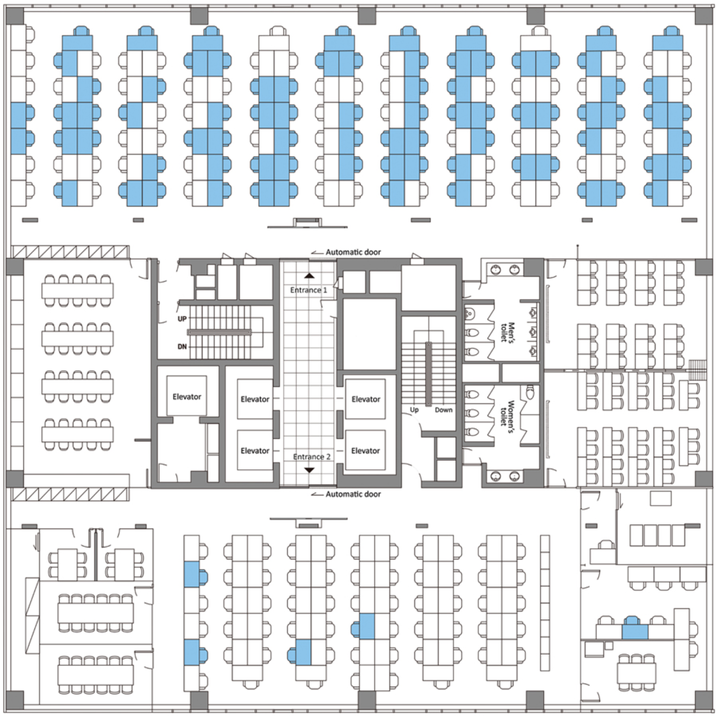
As business begin to reopen during the coronavirus pandemic, employers are reimagining what the office of the future should look like.
Some of those ideas are centered around increasing physical space between employees, as people working near each other can lead more easily to the spread of the contagious coronavirus. Of the 97 workers who tested positive for COVID-19 at one South Korean call center, 94 sat on the same floor and most of them were on the same side of the building.

The Centers for Disease Control and Prevention is advising employers to keep staff, visitors, and customers six feet apart, and cubicles are making a comeback. Companies are ordering permanent wall dividers and plastic “sneeze guards” that separate desks, according to office furniture suppliers.
But there is one top CDC recommendation that doesn’t require getting new equipment, and it’s something employers may already be doing to foster a safe working environment: flexible work arrangements.
To keep everyone safer, stagger shifts and shorten work hours.
Reducing working hours without reducing pay is one way for companies to enforce social distancing during this pandemic, said Alex Soojung-Kim Pang, author of “Shorter: Work Better, Smarter, and Less — Here’s How.″
“You can have fewer people in the office at any given time and let people spread out, and reduce the risk of people infecting each other,” Pang said. He added that companies that do this successfully are simply “reorienting from paying people for time to paying people for results.”
By shortening the workweek without pay cuts or shifting staff to part-time status, the change also encourages employees and employers to make the most of the work time they have, Pang said.
For companies and organizations that need to be client-facing and open every day, like many in retail and government, Pang said shorter shifts and longer operating hours can work, as well.
A Toyota repair center in Sweden has operated like this for more than a decade, with positive feedback from staff. The company has two six-hour shifts with full pay, one starting at 6 a.m. and the other at noon. As one-morning shift mechanic told The Guardian, “It is wonderful to finish at 12. Before I started a family I could go to the beach after work ― now I can spend the afternoon with my baby.”
Another model involves moving schedules to a four-day week in which half the staff works Monday-Thursday and half work Tuesday-Friday. “Already Monday and Friday you’ve got 50% office occupancy,” Pang said. Over the course of the week, workers will physically see the colleagues they need to, but also have a rotating remote work-from-home schedule to further decrease office occupancy Tuesday through Thursday.
Flexible work doesn’t require fancy technology. But it does require a cultural shift.
One other option to making offices safer is to not return to them, and make remote work the new normal.
Many current job listings describe working from home as a temporary fix and not a new primary work arrangement. “You must be available to work onsite in Manhattan once we are through the COVID-19 pause,” reads one for a New York City-based ad agency.
But what some companies expect to happen doesn’t align with what many employees want in a post-pandemic world. An April IBM poll of 25,000 U.S. adults found that when businesses return to normal operations, three out of four said they would like to continue to work remotely at least occasionally, while more than half said they wanted this to be their primary way of working.
As a Chinese travel call center found out, remote work can be a win-win for employees and employers. In a nine-month experiment, Ctrip employees who volunteered to work remotely reported higher job satisfaction and were more productive than colleagues based in the office. Ctrip estimated that it saved thousands of dollars on furniture and space for its remote employees over the course of the experiment.
So what’s stopping more companies from letting this option go mainstream?
To allow ideas like four-day workweeks and schedule flexibility to happen, employers need to combat “presenteeism,” said Dawna Ballard, who researches time as a form of communication at the University of Texas at Austin. Presenteeism is the “idea of showing up for the sake of being there, even when your mental and physical state means your productivity will be lower,” she said.
Currently, some people find their careers sidelined for taking advantage of flexible work policies. In one 2013 study, flexibility seekers were given lower job evaluations than people with traditional work arrangements.
Stopping presenteeism culture begins with having paid sick leave and job security, so people can feel safe enough to stay home and not work, Ballard said. Right now, if people think they need to show up to work even when they are unwell, it’s not only a productivity-killer ― it’s a health hazard. That’s why this pandemic can be practical catalyst for companies to introduce flexible policies that are “physiologically ideal” and not have “one sick employee come into work and infect the rest of [their] organization,” Ballard said.
“When [working from home] becomes the norm, then it’s no longer standing out as special or suspect accommodation.”
- Lisa Schur, co-director of the Rutgers Program for Disability Research.
If WFH is the new normal accommodation, it will benefit those with disabilities.
Making work-from-home a welcome option for all is also an inclusive solution that can benefit people with disabilities who need such accommodations, said Lisa Schur and Douglas Kruse, co-directors of Rutgers University’s Program for Disability Research.
Before the pandemic, “It was this unexamined assumption, that people couldn’t be supervised remotely,” Schur said. “That was a real barrier to many people with disabilities, some of whom could maybe be there some days on-site... and some people who needed to work at home all the time.”
Working from home can be a “reasonable accommodation” under the Americans with Disabilities Act, but employers have been reluctant to accommodate workers with disabilities, citing a lack of awareness as to how to handle the worker’s needs and costs.
But as employers learn that staffers don’t always need to be in the same place to collaborate, remote work may no longer be an outrageous-sounding request. “When [working from home] becomes the norm, then it’s no longer standing out as special or suspect accommodation,” Schur said.
- Stay up to date with our live blog as we cover the COVID-19 pandemic
- What happens if we end social distancing too soon?
- What you need to know about face masks right now
- Will there be a second stimulus check?
- Lost your job due to coronavirus? Here’s what you need to know.
- Why it takes so long to make a coronavirus vaccine
- Parenting during the coronavirus crisis?
- The HuffPost guide to working from home
- What coronavirus questions are on your mind right now? We want to help you find answers.
- Everyone deserves accurate information about COVID-19. Support journalism without a paywall — and keep it free for everyone — by becoming a HuffPost member today.